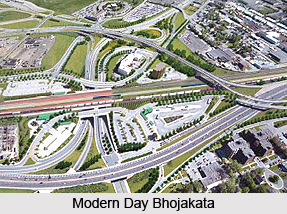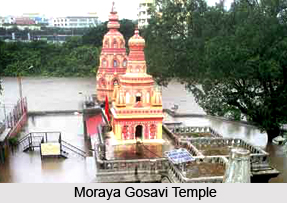 Bhojakata, an ancient Indian city which is presently known as Pimpri-Chinchwad is situated in the Maharashtra state of India. It is situated to the North-West of Pune and is well connected to the centre of Pune city via the Old Pune-Mumbai Highway. Currently, Pimpri-Chinchwad is one of the most important industrial hubs in Asia.
Bhojakata, an ancient Indian city which is presently known as Pimpri-Chinchwad is situated in the Maharashtra state of India. It is situated to the North-West of Pune and is well connected to the centre of Pune city via the Old Pune-Mumbai Highway. Currently, Pimpri-Chinchwad is one of the most important industrial hubs in Asia.
History of Bhojakata
Two thousand years ago, Pimpri-Chinchwad was the capital of legendary Hindu king Bhoj. During the period of Mahabharata it was known as Bhojakata, the capital of the Bhoja-Yadava king Rukmi. It is written in the epic Mahabharata that Bhojakata lay to the west of Kundinapuri, the capital of Vidarbha Kingdom.
Mythological Significance of Bhojakata
There is a legend behind the discovery of Bhojakata city. As per the legend, Rukmi, a Yadav king, wanted his sister Rukmini to be married by the Chedi king Shishupala. But Rukmi`s sister got married to Vasudeva Krishna without his will. Rukmi chased Krishna and pledged that he will not return to his capital without Rukmini. But he was defeated by Krishna`s army. So to keep his promise, Rukmi constructed another capital for Vidarbha, to the west of Kundinapuri called Bhojakata. Since then he started ruling from this new capital and never returned to Kundinapuri.
Tourism of Bhojakata
 The township of Bhojakata is located at a height of 530 m above the sea level. It is blessed with pleasing climate all round the year. The city is famous for its shrine of Saint Morya Gosavi which is also the Shakti Peeth of Lord Ganesha. It has a newly built temple of `Vaishno Devi`, which is similar to the actual `Vaishno Devi` Temple in Himalayas. Ganesh Chaturthi and Dasara are the important festivals of this city which are celebrated with great enthusiasm.
The township of Bhojakata is located at a height of 530 m above the sea level. It is blessed with pleasing climate all round the year. The city is famous for its shrine of Saint Morya Gosavi which is also the Shakti Peeth of Lord Ganesha. It has a newly built temple of `Vaishno Devi`, which is similar to the actual `Vaishno Devi` Temple in Himalayas. Ganesh Chaturthi and Dasara are the important festivals of this city which are celebrated with great enthusiasm.
In addition to these religious spots and festivals, the city is popular for having an entrance gate which is 14 ft high. The Bombay Gazette of 1885 has mentioned about this gate. The city also has a premier research institute of Hindustan Antibiotics Limited.
Connectivity of Bhojakata
Bhojakata or the modern day Pimpri-Chinchwad can be easily accessed by road, rail and air. It has a State Transport Bus stand called Pimpri-Chinchwad Bus Stand at Vallabhnagar from where basses can be availed. The nearest railway stations are Chinchwad Railway Station, Akurdi Railway Station and Pimpri Railway Station. The nearest airport is Pune Airport.



















